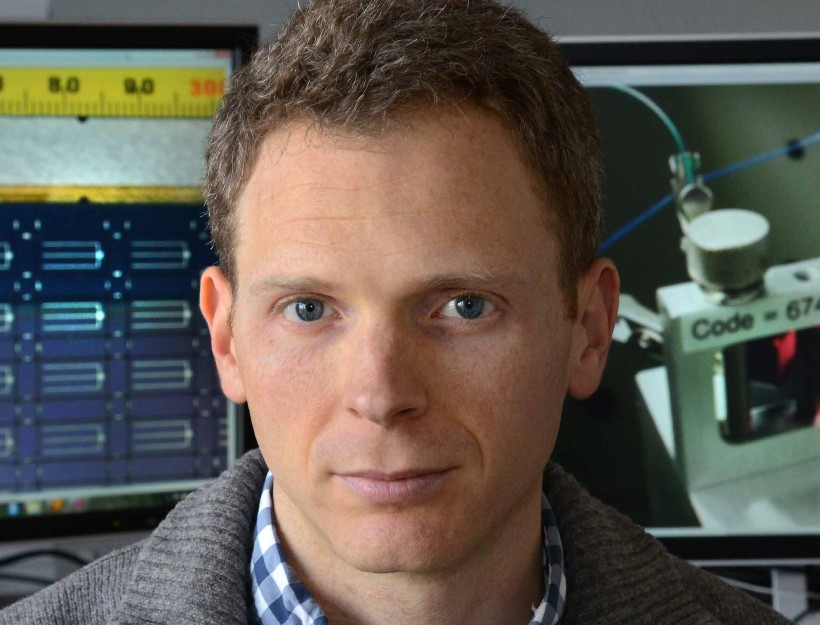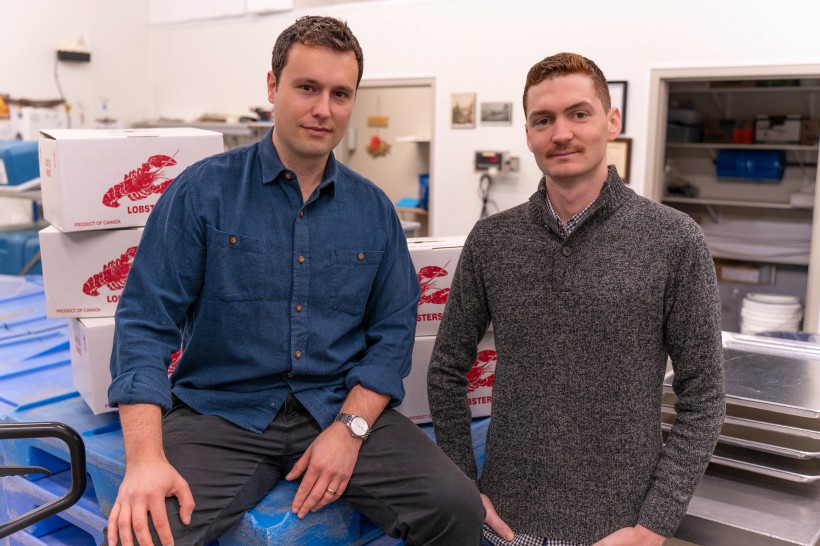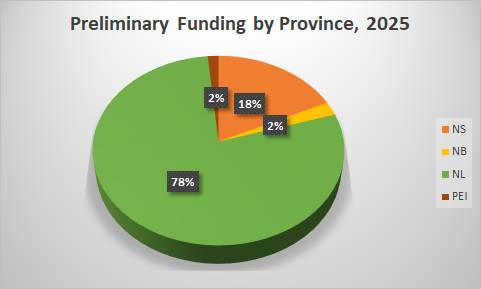When discussing what big, ocean-based carbon capture or storage could look like in 10 years, Matthew Eisaman likes to point out that atmospheric carbon capture will prove difficult unless it’s complemented by an ocean-based effort.
People understand the need for carbon capture – that is, the practice of capturing and storing greenhouse gases that would otherwise escape into the atmosphere. They also get the need for negative emissions technologies – processes that result in removing CO2 that has already been released into the atmosphere. There is too much CO2 in the atmosphere and we need to remove as much as we can.
But Eisaman, an Assistant Professor at Stony Brook University on Long Island, New York, points out that the effectiveness of atmospheric carbon capture will be limited unless humanity also addresses the problem of carbon in the oceans.
Covering 70 percent of the Earth’s surface, oceans are massive repositories of carbon – one estimate says 39,000 gigatonnes of carbon, or GtC currently reside in the oceans compared with 750 GtC in the atmosphere. The oceans absorb CO2 from the atmosphere through their expansive interface, and the more carbon we pump into the atmosphere, the more ends up in the oceans.
But there’s a flip side to this. If humanity is successful in decreasing the atmospheric CO2 concentration, the oceans will begin releasing their stored CO2 because there needs to be a balance between the oceans and the air. So, any successful carbon capture strategy for the atmosphere will need to be accompanied by one for the oceans.
“Everyone realizes at this point that we need to develop these technologies in parallel with the decarbonization of the electrical grid,” said Eisaman in a phone interview. He added that his strategies “have been based on that idea that the carbon in the ocean and atmosphere are in balance with each other. If we just remove it from the atmosphere and not the ocean, then the ocean will release it.”
Eisaman is one of a handful of people who are planning to battle climate change by removing carbon or acidity from the oceans or by sinking carbon so deep into its depths that it will remain there for centuries. The trait they all share is great ambition – they speak in terms of gigatonnes of carbon, billions of dollars in investment and decades of time. There’s no point in attempting ocean-based carbon capture unless you approach it on this scale.
'Oil Industry in Reverse'
“You’re thinking about creating the entire oil industry in reverse,” said Mike Kelland, the CEO of Ottawa- and Halifax-based Planetary Hydrogen.
The oil industry digs up carbon products formed over millions of years and burns them for energy. Carbon capture aims to take carbon and bury it deep in the ground or ocean. The difference is the oil industry developed over more than a century, but the climate crisis means the carbon capture industry has to get going in the next decade.
Though these entrepreneurs believe ocean-based carbon capture will be an industry within ten years, most projects are currently in the conceptual stage or the science is still being validated. There are a range of technologies that could be effective, from using chemicals to remove CO2, to accelerating the growth of seaweed. For these methods to remove gigatonnes of carbon, billions of dollars of capital will be needed, so each venture needs a business proposition as well as scientific efficacy. And each method has its own challenges.
Kelland said the low-hanging fruit of carbon capture is vegetation. On land, we can plant more trees and they will consume CO2, often storing it for hundreds of years. In the ocean, it’s different, he said. The easiest thing to grow is seaweed, which can capture massive amounts of carbon quickly. But seaweed is made of light tissue rather than wood, and it degrades quickly, releasing its carbon. The theoretical solution is to take the seaweed out to the ocean and sink it in the deepest submarine canyons, where the carbon will be stored for millennia.
That’s the strategy of Running Tide Technologies of Portland, Maine, which grows kelp on biodegradable buoys in deep water. The kelp grows to the point at which it is too heavy for the buoy, so they both sink and the carbon in the kelp is trapped on the ocean floor. Running Tide hopes the process will trap significant amounts of CO2 in deep parts of the ocean.
Other plans to adjust the carbon content in the oceans aim to change the pH balance of seawater. The increasing CO2 in the oceans has altered the pH balance and made the oceans more acidic, which is harmful to such animals as shellfish and coral. Some projects aim to remove acids from the oceans and/or increase alkalinity, a measure of the ocean’s capacity to resist changes in pH.
Eisaman, for example, is working on a project called SEA MATE, which stands for Safe Elevation of Alkalinity for the Mitigation of Acidification Through Electrochemistry. His process will send currents of sustainable electricity through sea water, resulting in the generation of an acid and a base. The base will be returned to the ocean, increasing the ocean’s capacity to resist future pH changes and safely locking up atmospheric CO2. The acid will be sold as an industrial product. One possible market, said Eisaman, could be using the acid to help clean up mining sites, which produce vast amounts of alkaline waste.
“The key for us on economics is we’re pretty convinced that we should be able to do it for less than $100 a tonne (of carbon dioxide captured), and we believe we should get some revenue from selling the acids that we extract,” said Eisaman.
He is hoping the desalination industry might be an early adopter, as desalination processes return a concentrated brine to the ocean that can be used as input to the SEA MATE process. The output of brine from these plants currently contains 1.6 GtC annually, and Eisaman said that amount is expected to rise to 4.7 GtC by 2035.
SEA MATE is currently going through trials to validate the science, economics, and safety for marine life, and within 12 to 18 months, Eisaman expects to have the information he needs to proceed as a commercial venture.

Planetary Hydrogen CEO Mike Kelland, left, Chief Scientist Sadaf Tahmasebi, and Lead Engineer Brock Battochio.
Planetary Hydrogen has a different business model, though it also involves the sale of a bi-product. Its multi-stage process starts by sending electricity through a mixture of water and mineral salt. The water is split into hydrogen and oxygen, and the company plans to sell the hydrogen as a clean fuel. Hydrogen is currently a $150 billion-a-year market, and that’s expected to double by 2030.
Because of the mineral salt in the solution, the process also produces a mildly alkaline substance. That alkalinity reacts with carbon dioxide in the atmosphere, trapping the CO2 and producing bicarbonate, which is an alkaline material. By depositing that bicarbonate in the ocean, the company hopes to help correct the pH balance of seawater.
“The oceans are able to handle it,” said Kelland. “The oceans are one of very few carbon repositories that have the scale to take the carbon out of the atmosphere and safely sequester it.”
These teams of scientist-entrepreneurs have to make both the science and economics work. Many of these projects require huge capital expenditures – especially when you consider that they aim to sequester billions of tonnes of carbon.
Asked about the required investment, Eisaman would only say that SEA MATE’s financial models show that its capital expenditure (capex) and operational expenditure (opex) should allow it to sequester carbon at less than $100 per tonne.
'$60B May Be a Bargain.'
Kelland said the required investment “depends on the pathway – some systems are more opex intensive, some are more capex. My very rough, back of the envelope, [estimate] for our system is $60 billion in capex for a gigatonne.” He added that these companies aim to receive $100 per tonne of carbon they capture, so a gigatonne each year would produce $100 billion in revenue. “If you build it to that scale, you’ll run it for 40-plus years,” he added. “So, $60 billion is kind of a bargain.”
The factor that produces realistic financial models is the burgeoning market for carbon offsets – mechanisms that allow groups that emit CO2 to cut their overall carbon footprints by paying those that reduce CO2.
Estimates of the size of the carbon offset market vary wildly but most agree it topped $200 billion in 2020 and is growing strongly. Driven by technology giants that have pledged to become carbon-neutral, there is already a movement to use carbon offsets to work on ocean-based carbon capture. Shopify is buying carbon offsets from both Running Tide and Planetary Hydrogen. San Francisco-based Stripe, an online payment systems company, announced in late May it would buy carbon offsets from six startups, and two are involved in ocean carbon capture. It will pay $250 a tonne to Running Tide and $1,370 per tonne to Seachange, a company that uses an experimental electrochemical process to sequesters CO₂ in seawater as carbonates.
One final note about the various carbon capture technologies is that this is not a Betamax-vs-VHS scenario (If you’re under 40, just Google it.) where the winner will destroy the other. These entrepreneurs foresee several of these technologies being installed and complementing one another.
“In terms of negative emissions technology generally, it’s not going to be just one approach that wins because each of these approaches, both in the ocean and air, they all have their own advantages and we probably want all of them, not just one,” said Eisaman. “Many of them will end up being deployed.”










